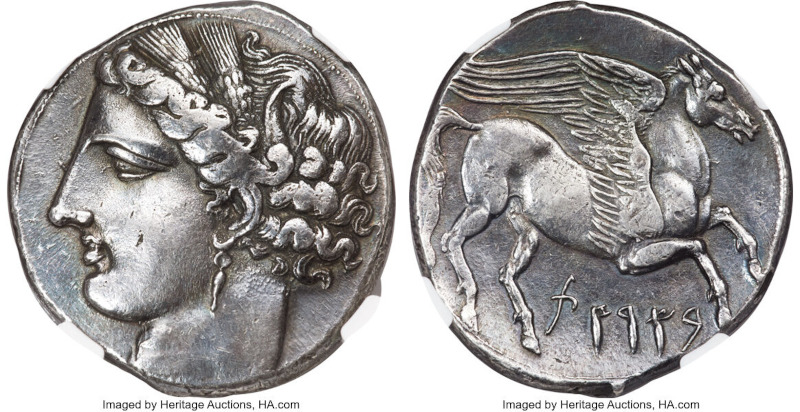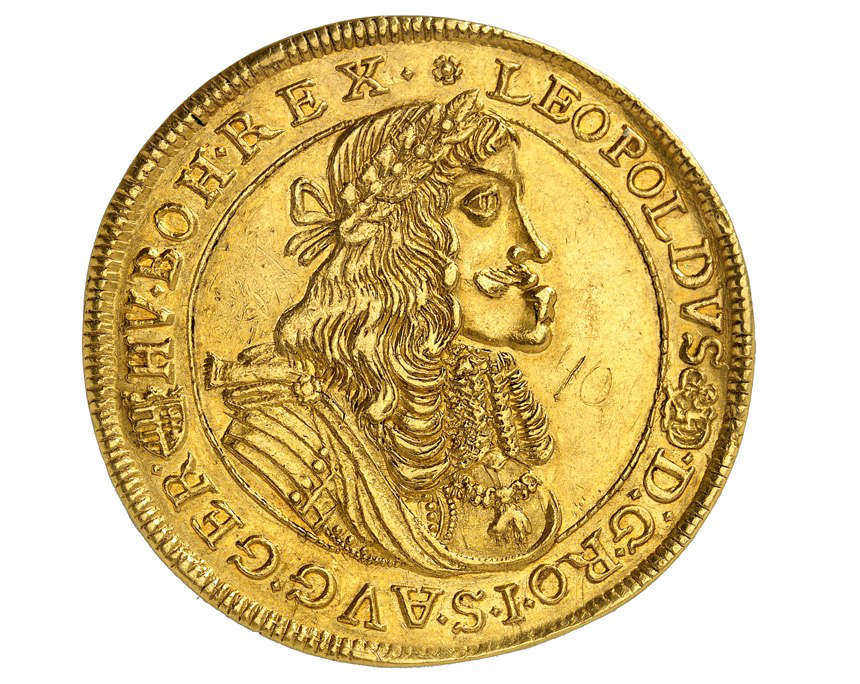From Taler to Mark and Beyond
Künker
Auctions 387-388
Coins
20-22 June 2023
D-Osnabrück
From 20 to 24 June 2023, Künker will hold their extensive Summer Auction Sales. In this preview, we will exclusively deal with the two public auction sales that take place from 20 to 22 June in Osnabrück. The two eLive Premium Auctions will be presented in a separate preview.
Auction 387 starts with Swedish rarities from the Gunnar Ekström Collection, the most important private collection of Swedish coins and medals that has been compiled to date. This is followed by world issues with a focal point on the German States, including numerous high-caliber pieces. Moreover, auction 387 presents another part of the Friedrich Popken Collection with selected lösers and a small series with Mecklenburg issues.
Auction 388 contains German coins from a North German private collection, which were minted between 1800 and 1918 and are of outstanding quality. The offer includes all rarities and, of course, the popular Frederick the Wise issue.
Rarities from the Gunnar Ekström Collection
Gunnar Ekström is a key figure of Swedish numismatics. Over several decades of active collecting, he compiled what is the most important private collection of Swedish coins and medals to date. His wife decided to sell the collection and use the proceeds to set up a foundation, which has had a profound impact on Swedish numismatics ever since. For example, it funds the professorial chair for Numismatics and Monetary History of the University of Stockholm as well as the numismatic research team that revolutionized what we know about Viking-age and other medieval finds of Northern Europe. Leading numismatists such as Britta Malmer, Kenneth Jonsson and Jens Christian Moesgaard were able to pursue their research thanks to the Gunnar Ekström Foundation. The example of this collector clearly demonstrates that a single individual certainly has the power to positively influence the development of the research landscape.
The series of issues from the Gunnar Ekström Collection offered at Künker is from the possession of the Ekström Foundation, which had displayed it in a showcase at the former museum for Economic and Monetary History in Stockholm. Since the museum closed down and there is no space for this showcase in the new location of the Royal Coin Cabinet, the foundation board decided to offer the previously withheld rarities of the collection on the market to increase the foundation’s financial means. You can look forward to extremely rare coins and medals, including pieces that the Swedish King Gustav III himself gave as a present to his cousin Peter Frederick Louis, the later Duke of Oldenburg!
World Coins
Coins and medals from all continents, minted between the Middle Ages and the recent past can be found in auction 387. No matter what field you are interested in: do not miss out on taking a close look at this catalog. It contains interesting objects from almost all numismatic fields. We will limit this preview to a few highlights that serve to illustrate the high standard of the offered issues. But do not be fooled! There are also numerous lots with three-figure estimates on offer. You see, there truly is something for everyone.
Let us start with the chapter for fans of coins from Great Britain. Here we have an extremely rare pattern of the 2-guineas piece from 1777. It features the portrait of George III on the obverse and was graded PF63 CAMEO by NGC, a rarity par excellence that testifies to the British mint’s fruitless efforts of creating a multiple gold coin for circulation. The much-later minted and significantly more popular “Una and the Lion” issue served the same purpose. This pattern dates to 1839, i.e., to the beginning of the reign of young Queen Victoria. Künker is able to offer a specimen of this famous coin type graded PF61 CAMEO.
Another, truly spectacular piece – for both friends of Russian numismatics as well as lovers of Prussian issues – is a perfectly preserved gold medal of which probably only this very piece exists in private possession. It is reminiscent of the treaty concluded by Prussia, Russia and Sweden in 1762. At the beginning of the year, the death of Elizabeth I had led to the accession to the Tsar’s throne of the Prussian admirer Peter III. Through a surprising change of alliances, he ensured the survival of the Prussian kingdom. This is commemorated by this medal. Legend has it that the Jewish Enlightenment philosopher Moses Mendelssohn came up with the idea for the design. However, this caused Peter to lose many sympathies at home, especially among the Russian military. Therefore, military officials did not hesitate to support Peter’s wife Catherine. Catherine, for her part, feared that Peter might divorce her due to her infidelity, among other things. Therefore, she and her lover launched an intrigue that had a lasting impact on Russian history. What would have happened if Peter III had actually managed to liberate the serfs like he planned? Would there have even been a Russian Revolution at all? We will never know. The medal offered at Künker is a captivating testimony to a crucial turning point in history.
This catalog also offers numerous examples of Habsburg multiple gold issues. At least as exciting is the small series of medals – or, as the Dutch say, “Historie-Penninge”. Our example is a crowded medal on the Peace of Breda in 1667.
Let us round off this section with another medal that refers to a historical turning point. From the Princely Fürstenberg Coin Cabinet in Donaueschingen, Künker offers a contemporary silver medal commemorating the defeat of Mohacs and the death of the Hungarian King Louis II in 1526. The latter’s death cleared the way for the Habsburgs to take power.
Coins from the German States
As always, Künker presents an extensive offer of coins and medals from the German States, including many gold and silver rarities. Within the Brunswick chapter, another part of the Friedrich Popken Collection of selected lösers will be sold. The varied designs of the coins are a delight to every connoisseur. And every coin enthusiast will find their special favorite.
In addition to numerous rarities, experts will spot a small series with Mecklenburg coinage. It includes, for example, an extremely rare pistole of 5 talers, minted on the occasion of the visit of Grand Duke Frederick Francis I to the mint of Schwerin, which was under construction at the time. To demonstrate the power of the new machines, eight gold and twenty silver specimens were struck with this die.
Catalog 388: From Taler to Mark
Collectors of German coins must also study catalog 388, which presents another collection of coins that were minted between 1800 and 1914. Künker dubbed this catalog “From Taler to Mark”, and the contents were compiled by a North German private collector.
The period between the turn of the century and the end of the First World War is one of the most fascinating episodes of the German past, both from the point of numismatics and history. This era saw the development of what we call the Federal Republic of Germany today. Many coins were created in the presence of the ruling prince at the time. They are a testament to the fact that rulers were highly interested in having an efficient monetary system. The credo of the economists of the time was that a German state without customs barriers be set up that had a currency that could be converted as easily as possible. They hoped that this would lead to progress following the British model. This required a shift from the self-sufficient subsistence economy of a peasant society to an industrial nation based on the division of labor. At the time, no one bothered about the collateral damage that would ensue from this progress, i.e., the destruction of livelihoods and the starving unemployed people. They also did not care about the fact that the trade war could turn into a real war at any time.
Catalog 388 contains all the testimonies to that century: konventionstalers and special issues dedicated to mint visits, diligence medals and commemorative coins. Moreover, collectors will also find those rare issues of the German Empire of which only tiny mintage figures could be created during the First World War due to a shortage in precious metal, for example the Bavarian Wedding issues or those showing Frederick the Wise.
It should also be mentioned that the collector paid attention to outstanding quality! “Extremely fine”, “Extremely fine to FDC”, “First strike” and “Proof” are the most common descriptions that you will find in this catalog.
To order a catalog, contact Künker, Nobbenburger Straße 4a, 49076 Osnabrück; phone: +49 541 / 962020; fax: +49 541 / 9620222; or via e-mail.






































